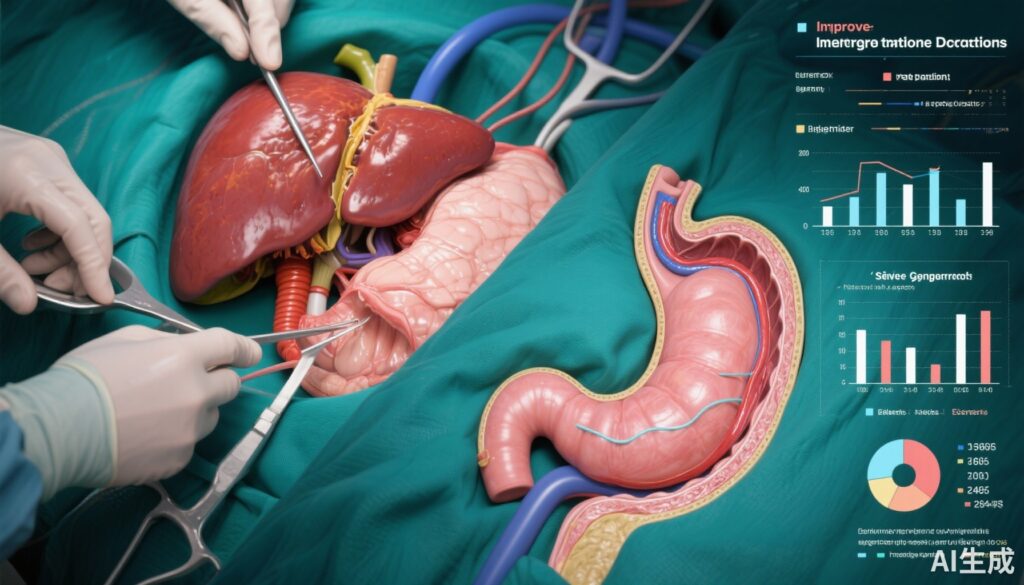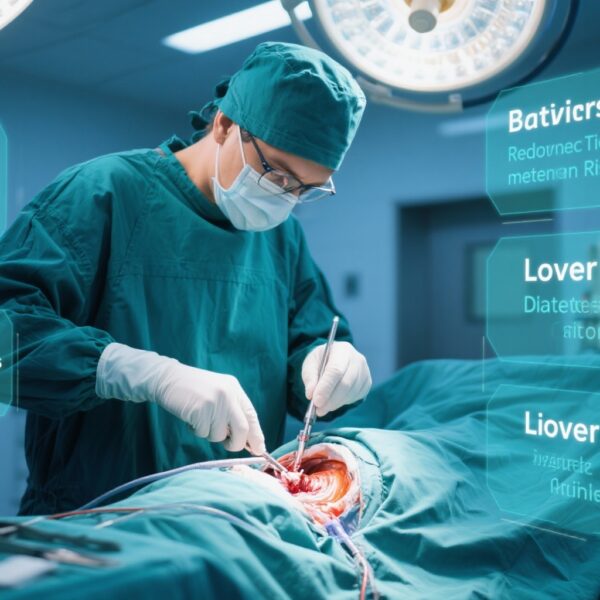Highlight
Simultaneous liver transplant and sleeve gastrectomy (LTSG) is effective for patients with obesity undergoing liver transplantation for metabolic dysfunction-associated steatotic liver disease (MASLD), providing sustained weight loss over nearly a decade, improved metabolic syndrome components such as diabetes and hypertension, and reduced recurrence of allograft steatosis. This combined approach does not increase mortality or graft loss compared to liver transplant (LT) alone, despite complexities related to post-operative gastroesophageal reflux disease (GERD).
Study Background
The rising prevalence of obesity globally has significantly impacted the population awaiting liver transplant. Many of these patients suffer from metabolic dysfunction-associated steatotic liver disease (MASLD), a condition characterized by accumulation of fat in the liver that is related to metabolic derangements such as insulin resistance, obesity, and dyslipidemia. MASLD has grown into a leading indication for liver transplant. However, post-transplant recurrence of metabolic dysfunction and steatosis often occurs, jeopardizing graft survival and patient outcomes.
Traditional liver transplantation does not directly address obesity and its associated metabolic syndrome, contributing to continued morbidity and risk for allograft steatosis and fibrosis. Bariatric surgery, particularly sleeve gastrectomy, has demonstrated efficacy in weight reduction and improvement of metabolic parameters in non-transplant populations. Integrating bariatric procedures with liver transplantation could theoretically target the root cause of MASLD and improve long-term outcomes, but concerns about surgical risk, graft outcomes, and complications have limited widespread adoption.
This study by Larson et al. investigates the long-term safety and efficacy of performing simultaneous liver transplant and sleeve gastrectomy (LTSG) compared to liver transplant alone in obese patients with MASLD, a seminal effort to clarify the optimal management strategy for this increasingly common clinical scenario.
Study Design
This multicenter retrospective cohort study analyzed 72 patients undergoing simultaneous LTSG under a standardized clinical protocol and compared outcomes to 185 patients with BMI >30 undergoing liver transplant alone for MASLD. The follow-up periods were a median of 41 months (range 4–153 months) for the LTSG group and 75 months (range 12–161 months) for the LT-alone group. Key endpoints assessed included mortality, graft loss, body mass index (BMI), components of metabolic syndrome (diabetes, hypertension), allograft steatosis, and fibrosis.
Key Findings
Survival and Graft Outcomes: Mortality and graft loss rates did not significantly differ between the LTSG and LT-alone groups, demonstrating that the combined procedure does not increase perioperative or long-term transplant-related risks.
Weight Loss: Patients undergoing LTSG started with a mean BMI of 45.5 kg/m2 and achieved significant and durable weight loss persisting beyond 9 years post-transplant (p < 0.001). In contrast, the LT-alone group, with a lower mean baseline BMI of 34.0 kg/m2, experienced no significant change in weight during follow-up.
Metabolic Syndrome Improvement: The prevalence of diabetes in the LTSG cohort was significantly lower than in the LT-alone group after 8 years (p < 0.05), and hypertension prevalence decreased notably from 61.1% to 35.8% within the LTSG group (p < 0.01). These improvements highlight the substantial metabolic benefits conferred by adjunctive sleeve gastrectomy at the time of transplant.
Allograft Health: Incidence of allograft steatosis was significantly reduced in the LTSG group compared to LT alone (p = 0.004). Additionally, the prevalence of fibrosis between 3 and 10 years post-operatively was lower in the LTSG group, with a relative risk ratio of 0.46 (p = 0.09), suggesting a trend toward decreased progression of graft fibrosis.
Safety and Complications: Serious complications were infrequent; one patient experienced a gastric sleeve leak, and another required hiatal hernia repair. Severe gastroesophageal reflux disease occurred in 11.1% of LTSG patients, with pre-existing diabetes and GERD identified as risk factors, indicating the need for careful patient selection and monitoring.
Expert Commentary
This study offers compelling real-world evidence supporting the feasibility and long-term benefits of combining sleeve gastrectomy with liver transplantation in obese patients with MASLD. By addressing both the end-stage liver disease and underlying metabolic dysfunction concurrently, LTSG shifts the treatment paradigm toward holistic care.
However, retrospective cohort design and differences in baseline characteristics such as BMI and follow-up duration between groups may introduce selection bias and confounders. The trend toward reduced fibrosis requires validation with larger prospective studies. GERD remains a challenging complication which warrants preoperative assessment and tailored postoperative management.
From a mechanistic perspective, sustained weight loss post-sleeve gastrectomy likely improves insulin sensitivity and lipid metabolism, thereby reducing steatotic injury in the allograft. These metabolic improvements, in turn, protect against graft fibrosis progression, a major determinant of long-term graft survival.
Conclusion
Simultaneous liver transplant and sleeve gastrectomy emerges as a safe and effective strategy to achieve durable weight loss, remission of diabetes and hypertension, and prevention of recurrent allograft steatosis in obese patients undergoing liver transplant for MASLD. This approach does not compromise survival or graft function and may represent a critical advance in managing this complex patient population. Continued research through prospective trials and enhanced perioperative care protocols is warranted to refine patient selection criteria and optimize outcomes.
Funding and Clinicaltrials.gov
No specific funding information was provided in the primary article. The study was retrospective and multicenter; no clinical trial registration was noted.
References
Larson EL, Ellias SD, Blezek DJ, Klug J, Hartman RP, Ziller NF, Bamlet H, Mao SA, Perry DK, Nimma IR, Badurdeen D, Yang L, Leise MD, Watt KD, Diwan TS, Taner T, Rosen CD, Elli EF, Madura JA, Jadlowiec CC, Lizaola-Mayo B, Kellogg TA, Heimbach JK. Simultaneous liver transplant and sleeve gastrectomy provides durable weight loss, improves metabolic syndrome and reduces allograft steatosis. J Hepatol. 2025 Sep;83(3):729-737. doi: 10.1016/j.jhep.2025.02.030. Epub 2025 Mar 13. PMID: 40089069.
Younossi ZM, et al. Global burden of NAFLD and NASH: Trends and implications. Hepatology. 2018.
Friedman SL, Neuschwander-Tetri BA, Rinella M, Sanyal AJ. Mechanisms of NAFLD development and therapeutic strategies. Nat Med. 2018.



